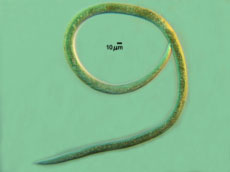
Interactions
North American River Otters prey primarily on fish and
crayfish
(Stearns
and Serfass, 2011). However, they may also consume birds,
amphibians, mammals and mussels (Stearns and Serfass, 2011). Animals
that in turn prey on
the otters include grey wolves, coyotes,
bobcats, red foxes (Varley, 1998) crocodiles, killer whales,
cougars, dogs and alligators (The IUCN Red List of Threatened
Species). If an otter is eating a fish, they often will attract bald
eagles, ravens, and pelicans who are interested in scavenging the
otter’s catch (Varley, 1998). Within the species, males will not help the females
with the responsibilities of
raising the young otters (National Geographic). However, all otters do enjoy
interacting with each other to play games, but these interactions
occur mostly between
the adult females and their young (Defenders of Wildlife).
Human interaction with the otters generally has a negative effect on the populations. Humans trap the otters for their pelts, which are valuable and can be sold and made into clothing. During a single year in the 1970s, an average of 50,000 otter pelts were gathered in Canada and the United States, clearly leaving an impact on their populations (The IUCN Red List of Threatened Species). Other human activities such as trapping, illegal shooting, run-ins with cars and the accidental capture otters also contributes to their decreasing numbers (The IUCN Red List of Threatened Species).

River otters also have interactions with parasites. Some of their endoparasites include nematodes, trematodes, and cestodes. They also interact with common ectoparasites such as lice and fleas (The IUCN Red List of Threatened Species).
To learn more about how North American River Otters interact with each other, visit our Reproduction page.